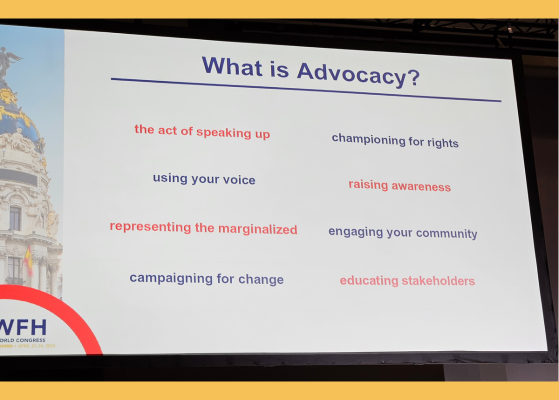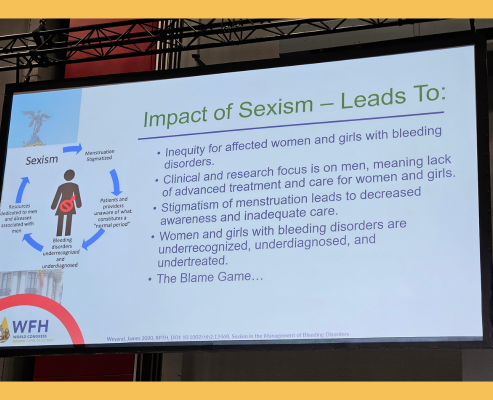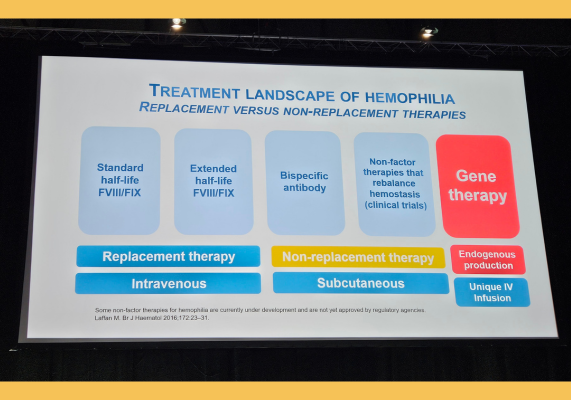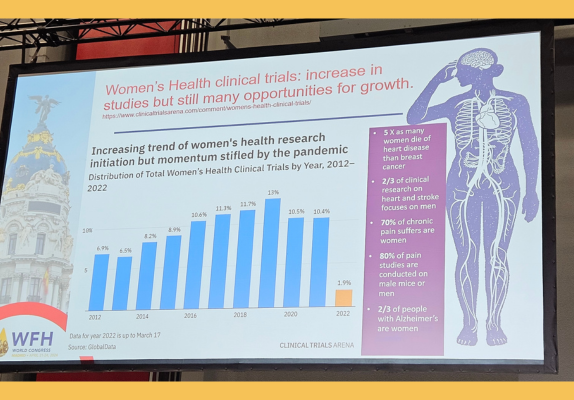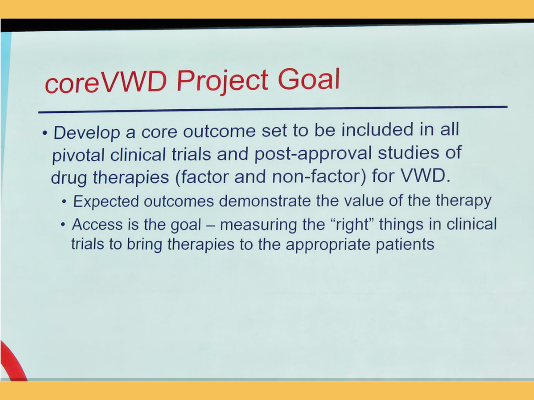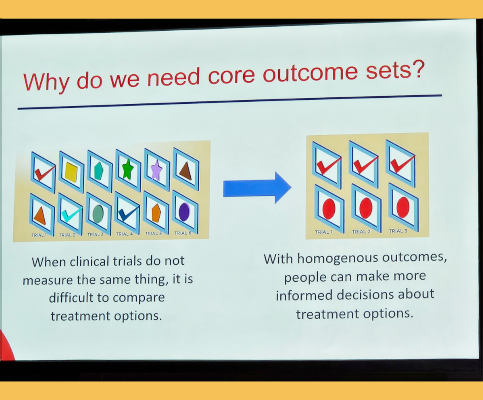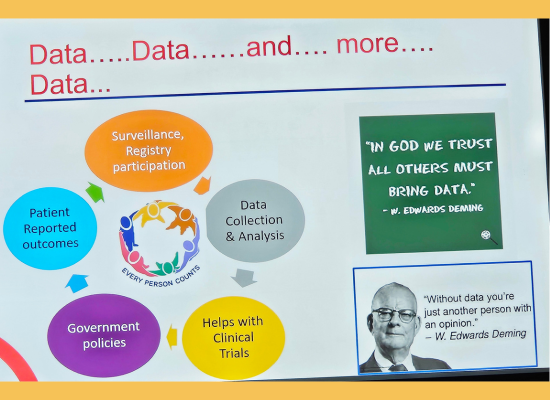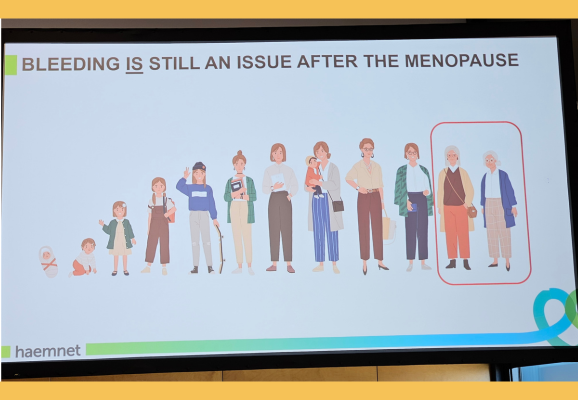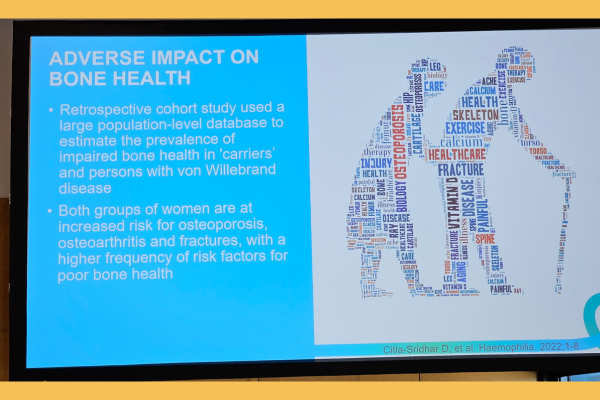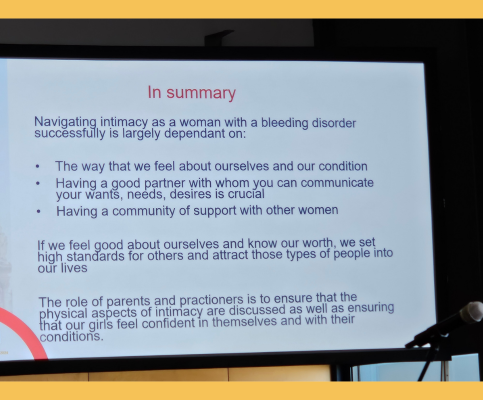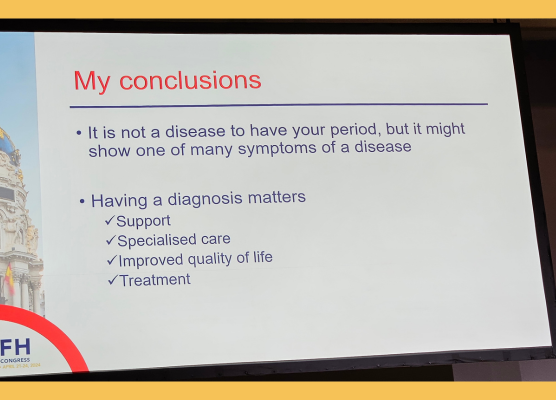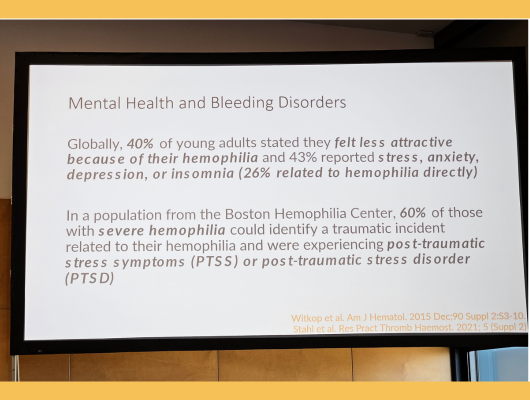WFH World Congress: so much to learn in so little time!
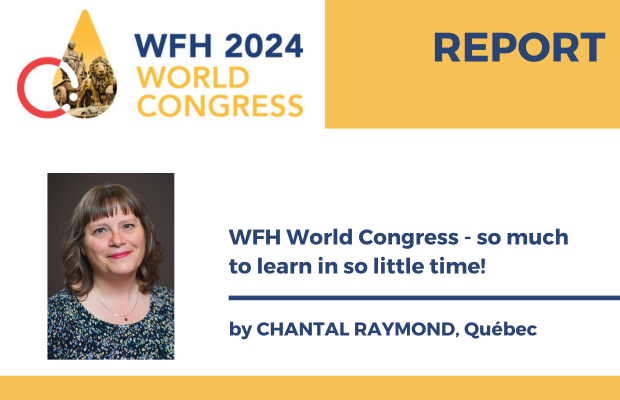
For many years I coordinated the publication of articles written by participants who had attended the WFH World Congresses for the CHS newsmagazine, Hemophilia Today. I read so many very interesting reports on highly informative sessions and how inspiring it was to meet the rest of the hemophilia worldwide community. I kept telling myself that the WFH World Congress seemed to be the coolest place to go!
To say that I had high expectations heading into my very first congress in Madrid would be an understatement. I was excited, grateful and overjoyed to be able to experience firsthand what has been so often described as fabulous.
Well, I won’t keep you waiting – my expectations were definitely surpassed!
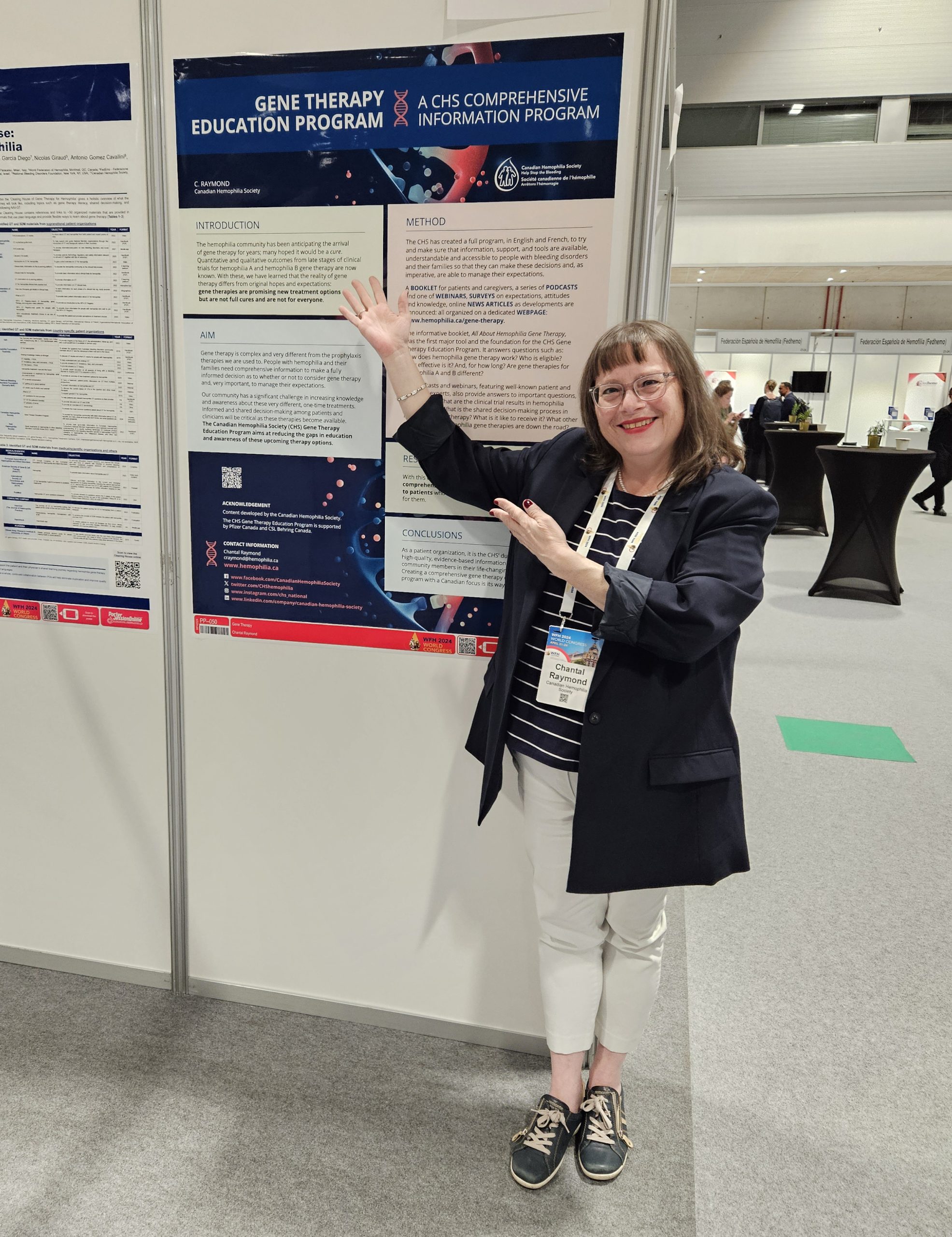
It was gene therapy that brought me to the WFH 2024 World Congress. I had the great joy and pride of having my poster abstract accepted by the World Federation of Hemophilia to present the CHS Gene Therapy Education Program on April 22. I cannot encourage you enough to check out this exceptional program if the topic interests you. The program includes a wealth of resources related to this new treatment. A continuously updated booklet, incredible podcasts, webinars, articles – everything you need, in one place, to facilitate understanding and aid decision-making as to whether or not consider gene therapy. There is a lot to learn and dissect, and doctors and patients experts in the field are there to share their experience and expertise.
www.hemophilia.ca/gene-therapy
The biggest challenge I faced while preparing for congress was choosing which sessions to attend from the dozens and dozens offered. But, with a detailed Excel spreadsheet and the great mobile app offered as part of the conference, I was ready to dive into it!
And what a start I had! As a preamble to the main event, a full-day workshop dedicated exclusively to women and bleeding disorders and the management of heavy menstrual bleeding was offered. The workshop was chaired by eminent figures: Dr. Roshni Kulkarni (USA), Lauren Phillips (New Zealand), Dr. Robert Sidonio (USA) and Dr. Tahira Zafar (Pakistan), surrounded by an equally impressive panel of highly qualified individuals to discuss such an important subject. The discussions were intense, sometimes confrontational, often unifying, certainly inspiring, and more. Here are just a few of the topics covered throughout the day, which will help you understand why this workshop was so impactful: predictors of diagnostic delays and loss to follow-up in women with von Willebrand disease, prophylaxis in von Willebrand disease, emicizumab in women with hemophilia A, the impact of sexism on equities in care and treatment for women and girls with bleeding disorders, the lack of women in clinical trials and its impact, prevention of post-partum hemorrhage, and so forth.
I didn’t know it yet, but this first day would introduce recurring themes that would be named, discussed and debated throughout all the sessions I attended over the following days. Furthermore, judging by the closing speeches of the congress, these themes were heard just about everywhere, in several conference rooms.
Even before the opening ceremony, the tone was set: people were happy to be there, front row for captivating discussions on a multitude of topics that stimulate this wonderful global bleeding disorder community.
On Monday morning, I was one of the first to arrive at IFEMA Madrid, the congress centre. I didn’t want to miss the atmosphere and excitement generated by the arrival of over 3,000 delegates, who would be arriving one after the other, dispersing throughout the congress centre to listen to and learn from experts from around the world.
That first day unfolded like a dream – I went from session to session, took countless photos of the PowerPoint presentations and absorbed as much new information as I could. There were discussions about the rapidly evolving treatment landscape for hemophilia A and B, including new strategies like non-replacement therapies and gene therapy, We also talked about the disparity in age at diagnosis between boys and girls, with girls and women experiencing a delay of at least 10 years compared to boys.
During this first day, there was also much discussion about the fundamental importance of registries, the need to gather all the essential data, to advocate for the community’s rights and to advance care and treatment in the right direction. I particularly liked a quote presented in a slide show: “Without data, you’re just another person with an opinion.” – W. Edwards Deming. How true!
But what about Canada’s efforts in compiling the data shaping our bleeding disorder community? The Canadian Bleeding Disorders Registry, a clinical data registry with input from treatment centre staff, is owned by the Association of Hemophilia Clinic Directors of Canada, and managed by the Department of Health Research Methods, Evidence and Impact at McMaster University. More and more patients are being registered, but there is still room for improvement. Canada’s contribution to PROBE (Patient Reported Outcomes, Burdens and Experiences) is also more than commendable, but again, there can never be too much data collected!
Speaking of data, women must not be left behind. It is crucial for them to provide their data, share their stories, and document all aspects of their health. This allows their health care providers to have access to the most meaningful and comprehensive information.
I won’t hide from you that there was a palpable frustration when the subject of women and bleeding disorders was brought up. Yes, of course, there has been significant progress, but why, in 2024, is there still so much left to do and achieve? Can we stop identifying the problems – we know what they are (delayed diagnosis, lack of women in clinical trials, incorrect classification, reluctance to provide certain treatments, etc.) – and move towards implementing solutions?
Gene therapy certainly had a prominent place at this congress. How could it be otherwise, given that it is what so many people have been eagerly awaiting, and now that this treatment is tangible and within reach? We were treated to incredible testimonials from people with hemophilia who have received gene therapy. Here are just a few of the comments we heard:
“I entered a hemophilia-free mind.”
“Even with gene therapy, I still live with the physical and mental scars of a lifelong hemophilia.”
“Unfortunately, gene therapy did not reverse my joint damage.”
“I didn’t know I needed it until I got it!”
“While travelling to India, I kept quiet about having received gene therapy. I felt guilty to have had received it, knowing full well that patients in that part of the world were still a long way off.”
“My daily pain is a reminder of what hemophilia took away from me.”
“My only concern is to go back to my old life, but I try to enjoy it while it lasts.”
The rest of the conference was a whirlwind for me, feeding me with equally incredible testimonials, sparking numerous questions, sometimes receiving answers, and compiling a wealth of relevant information to further understand what makes this global bleeding disorder community what it is.
One of the most memorable presentations for me was by Amanda Brito del Pino Mouro, a representative from the Hemophilia Association of Uruguay. She presented the incredible work carried out by their association and their community. They established an advocacy strategy with great impact in the short and long term, they positioned their patient association as a key participant in negotiations related to treatment access, they generated a substantial change in the quality of life of people with hemophilia and finally used communication strategies and storytelling as key aspects of their advocacy process.
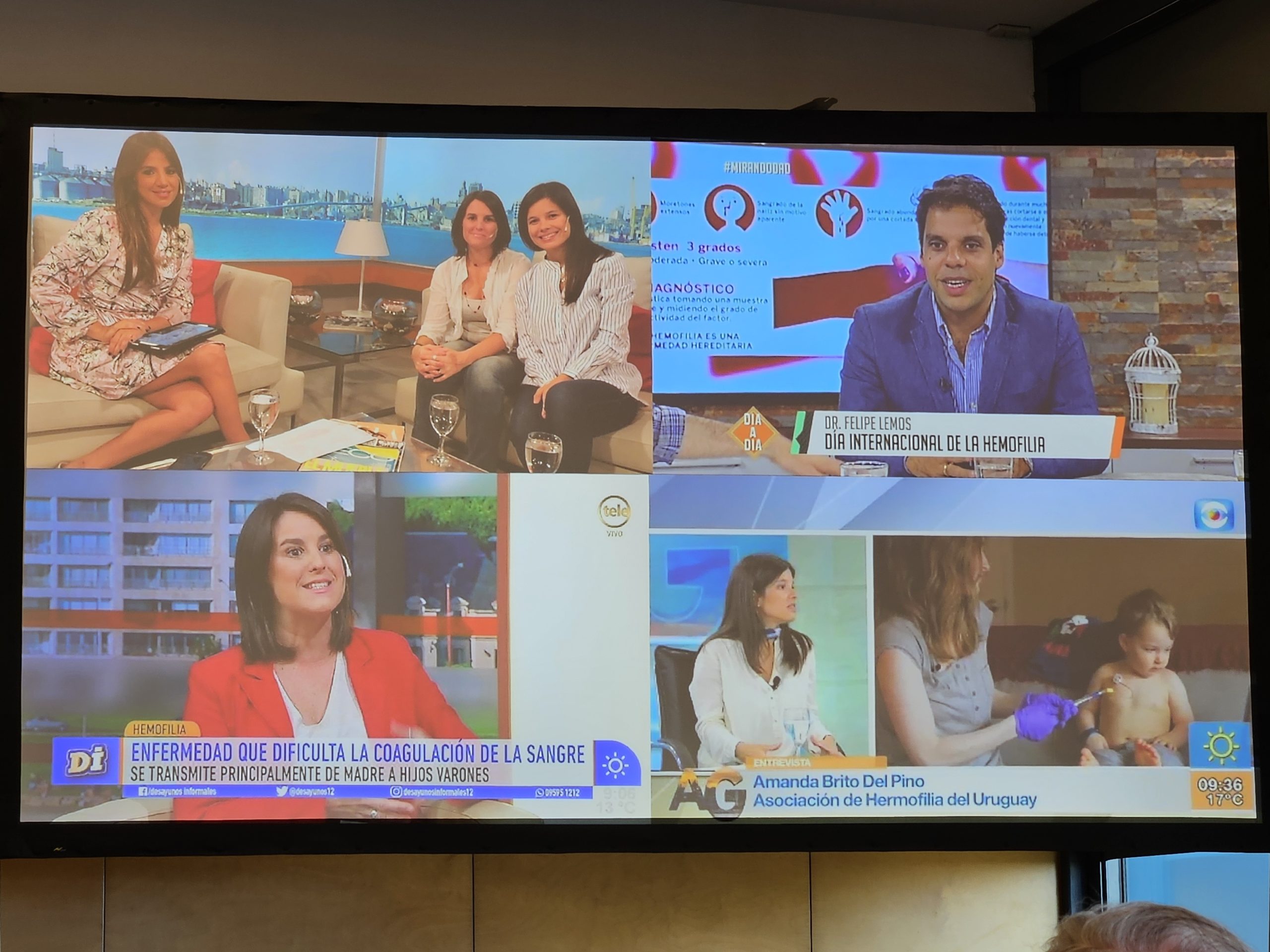
All this colossal work resulted in great success. Among other things, their efforts got the attention of the media and the country’s president and resulted in having 56 patients being able to positively change their treatment. They succeeded in changing public policies, hemophilia gained public relevance, and more than 50 national news reports were about hemophilia. Their take on all this work: structural changes are achievable through advocacy efforts, planned communication and patient empowerment. National patient organizations have to work with a plan that involves the whole community, professional resources with a strong, clear and measurables outcomes. And more important than anything else: “don’t forget to tell the story!”
Throughout these sessions, I was very proud to hear so many references to Canada, whether about the work of our doctors (who are frequently quoted!), the effectiveness of our treatment centres, our global involvement, and much more. It seems we are seen as a source of inspiration to many around the world. Hats off to our community!
I could talk for hours about everything I saw and heard at the WFH 2024 World Congress. I was inundated with waves of information, frantically taking notes and trying to remember everything to share with you in CHS CONTACT. I now realize the task is greater than expected; but I hope I have managed to convey the spirit of the Congress and the phenomenal breadth of information shared during those four intense days.
I will conclude by leaving you, in no particular order, with fragments of testimonies, slides and data I heard and saw here and there.

